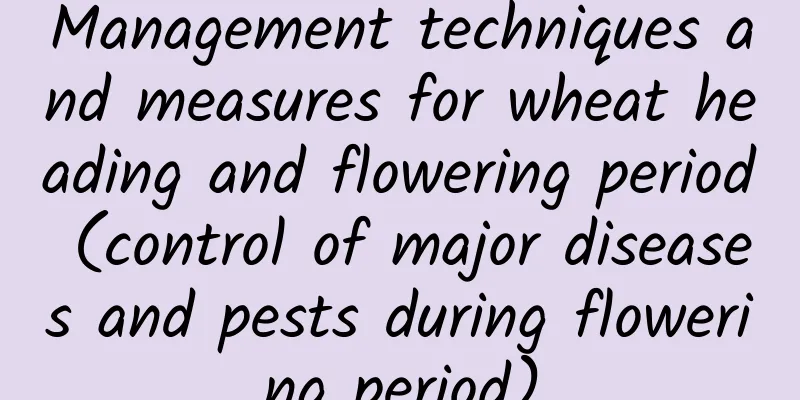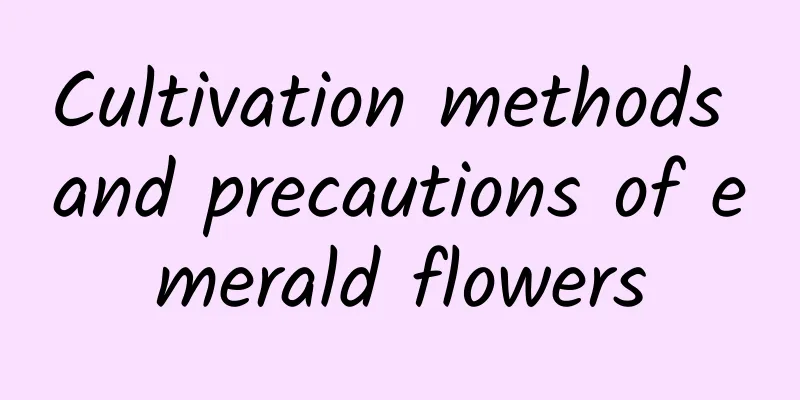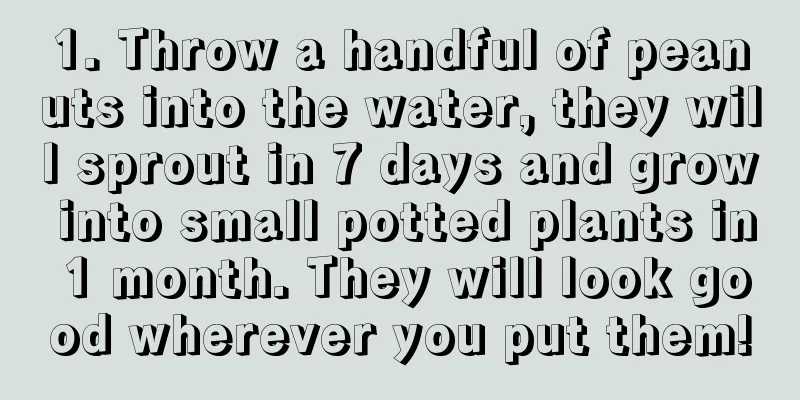Management techniques and measures for wheat heading and flowering period (control of major diseases and pests during flowering period)

|
"It is just the right time for Qingming Festival and Grain Rain, and I can have a cup of fragrant tea in between." As the temperature continues to rise and the rain nourishes the wheat, the wheat will soon move from the jointing stage to the heading and flowering stage. During this period, we should not only prevent and control wheat diseases, but also manage water and fertilizer well to lay a good foundation for high yield, because this period is the most critical period for wheat grain formation, which not only affects the number of seeds, but also affects the final yield of wheat. So how can we manage to ensure high yields? Let me share with my farmer friends, just for reference! 1. Characteristics of fertilizer requirements during wheat heading and flowering periodAfter wheat heads, the distribution of nutrients changes, with most nutrients flowing to reproductive growth. At this time, the growth of stems and leaves gradually stops. We can also clearly see in the field that the grains begin to develop. The management during this period also requires a lot of water and fertilizer. While spraying pesticides to prevent diseases, we also need to spray fertilizers on the leaves to promote growth. During this period, wheat needs not only nitrogen, phosphorus and potassium, but also various trace elements such as boron, molybdenum, zinc, manganese and iron. The dosage of these trace elements is very small, and some only need a few grams per acre of land, so it is definitely not okay to spread them on the ground. However, we have to supplement them because these trace elements are very important for the development of wheat grains. If the seed setting rate is reduced, the yield reduction is inevitable. Therefore, we can supplement them by foliar spraying during this period. 2. What fertilizers should be added during the heading and flowering period of wheatAfter these years of planting experience, supplementing amino acid foliar fertilizer is beneficial to the growth needs during this period. It can not only supplement phosphorus, potassium and trace elements, but also enhance photosynthesis and promote enzyme activity. Amino acids are the smallest molecules that make up protein and can be easily absorbed by crops. They can enhance wheat's disease resistance and improve its quality and yield. It can stimulate and regulate the rapid growth and robustness of wheat, promote the absorption of nutrients, and achieve the goal of increasing production and income. 3. UsageIt is recommended to use 50 ml of water-soluble fertilizer (amino acid ≥10%, trace elements ≥20% containing amino acids) + 15-20 kg of water for spraying per mu of wheat after heading and before flowering. Spraying again after 10 days can significantly increase the seed setting rate, thereby improving quality and yield. According to relevant experimental data, it is possible to increase the yield by 100 kg per mu. In fact, many wheat farmers currently add potassium dihydrogen phosphate or amino acid foliar fertilizer when spraying pesticides, and the effect is much better than not adding it. And the dosage is small and there is no cost burden, which is still quite practical. 4. Prevent and control diseases and late spring coldWheat fusarium head blight will come in force in April every year. In areas with high incidence in previous years, prevention and control should be carried out in advance. In addition, stripe rust and late spring cold weather should also be prevented and controlled. The heading stage is a critical period for the formation of wheat yield. Once pests and diseases and frost damage occur, the impact on wheat yield is great. Once wheat is infected with stripe rust, many small rust-red bumps will appear on the leaves. When these bumps are broken, a lot of rust-red powder will be exposed, which will spread with the air flow and infect the entire plot. Therefore, prevention and control should be carried out in time. Wheat fusarium head blight is one of the most common and serious diseases during the heading and flowering period of wheat. It mainly harms the wheat ear and causes the spikelets to dry up. In severe cases, the spikelets above the diseased part may become dry and white. Late spring cold is a common natural disaster in spring, which has a great impact on the growth of wheat. The occurrence of late spring cold affects the development of wheat grains, increases the proportion of wheat bald tips, half-truncated ears, dumb ears and white ears, and seriously affects wheat yields. Prevention and treatment methods:It is recommended to choose one of the following spraying methods before wheat heading: Option 1: Use 20 ml of 40% thiazolin-tebuconazole suspension + 200 g of potassium dihydrogen phosphate + 10 ml of brassinolide aqueous solution + 20-30 kg of water per mu; Option 2: Use 15-20g of trifloxystrobin·tebuconazole water dispersible granules + 200g of potassium dihydrogen phosphate + 10ml of brassinolide aqueous solution + 20-30kg of water per mu; Option three : Use 50 ml of 40% prothioconazole-tebuconazole suspension + 200 g of potassium dihydrogen phosphate + 10 ml of brassinolide aqueous solution + 20-30 kg of water per mu. You can choose any one of the above three options, spray once every 15 days, and spray twice in a row. 5. Preventing Late Spring ColdThe weather is getting warmer day by day, but the temperature in spring is not stable, it fluctuates, and cold weather is prone to occur. We must always pay attention to the weather forecast. 3 to 7 days before the arrival of low temperatures, we can use 200 grams of potassium dihydrogen phosphate + 10 ml of 0 brassinolide aqueous solution + 30% amino acid trace element water-soluble fertilizer + 20 to 30 kilograms of water for spraying per acre. It can not only enhance the wheat's own frost resistance, but also supplement the wheat with nutrition, improving its quality and yield. Of course, the above are just some of the better solutions used in recent years. Not all of them can be used together. You should choose to apply them based on your actual situation. |
Recommend
How to grow chrysanthemums
1. Maintenance conditions 1. Light: It must be in...
Tangyin leaf cutting tutorial
1. Cutting time The recommended time for Tangyin ...
Can cherry trees be planted in Hunan?
Can cherry trees be grown in Hunan? Cherry trees ...
Can goldfish spider plant be hydroponically cultivated?
Can goldfish spider plant be hydroponically culti...
Be careful not to use the wrong pot when growing flowers. Otherwise, the flowers will not survive no matter what you do. No wonder you are a flower killer!
Long flower pots to prevent root rot In our previ...
The efficacy and function of Tianshan Yacon
Indications Tianshan yacon is one of the very few...
Move this flower into the kitchen. You can eat it, look at it, and absorb oil fumes. It just looks cool!
Suction fumes Pothos We often cook in the kitchen...
The growing environment and local conditions of Salvia miltiorrhiza
Salvia miltiorrhiza growth environment and condit...
Is blue snow flower poisonous?
1. No toxicity According to current information, ...
How to grow peacock arrowroot in four seasons
Four seasons maintenance of peacock arrowroot Spr...
What are the best flowers to put in the bedroom?
1. Cactus Generally, plants release CO2 at night,...
How long is the growth cycle of rhubarb?
Introduction to Rhubarb Growth Rhubarb is commonl...
Garlic cultivation methods and precautions
1. Breeding methods 1. Temperature: 18 to 26 degr...
When is the best time to sow tuberose seeds?
Tuberose seeds sowing time Tuberose seeds are usu...
These 8 kinds of flowers bloom for half a year, so addictive
Euphorbia pilosa Flowering period All year round ...









